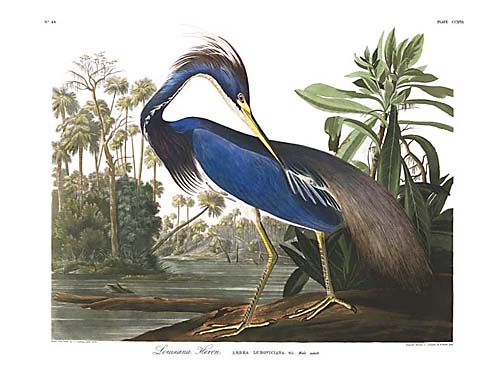|
||||||||||||||||||||
|
||||||||||||||||||||
|
|
||||||||||||||||||||
|
Ornithological Biography Delicate in form, beautiful in plumage, and graceful in its movements, I never see this interesting Heron, without calling it the Lady of the Waters. Watch its motions, as it leisurely walks over the pure sand beaches of the coast of Florida, arrayed in the full beauty of its spring plumage. Its pendent crest exhibits its glossy tints, its train falls gracefully over a well defi ned tail, and the tempered hues of its back and wings contrast with those of its lower parts. Its measured steps are so light that they leave no impression on the sand, and with its keen eye it views every object around with the most perfect accuracy. See, it has spied a small fl y lurking on a blade of grass, it silently runs a few steps, and with the sharp point of its bill it has already secured the prey. The minnow just escaped from the pursuit of some larger fi sh has almost rushed upon the beach for safety; but the quick eye of the Heron has observed its motions, and in an instant it is swallowed alive. Among the herbage yet dripping with dew the beautiful bird picks its steps. Not a snail can escape its keen search, and as it moves around the muddy pool, it secures each water lizard that occurs. Now the sun’s rays have dried up the dews, the fl owers begin to droop, the woodland choristers have ended their morning concert, and like them, the Heron, fatigued with its exertions, seeks a place of repose under the boughs of the nearest bush, where it may in safety await the coolness of the evening. Then for a short while it again searches for food. Little diffi culty does it experience in this; and at length, with the last glimpse of day, it opens its wings, and fl ies off towards its well-known roosting-place, where it spends the night contented and happy.
This species, which is a constant resident in the southern parts of the peninsula of the Floridas, seldom rambles far from its haunts during the winter season, being rarely seen at that period beyond Savannah in Georgia to the eastward. To the west it extends to the broad sedgy fl ats bordering the mouths of the Mississippi, along the whole Gulf of Mexico, and perhaps much farther south. In the beginning of spring, it is found abundantly in the Carolinas, and sometimes as far east as Maryland, or up the Mississippi as high as Natchez. You never fi nd it far inland: perhaps forty miles would be a considerable distance at any time of the year. It is at all seasons a social bird, moving about in company with the Blue Heron or the White Egret. It also frequently associates with the larger species, and breeds in the same places, along with the White Heron, the Yellow-crowned Heron, and the Night Heron; but more generally it resorts to particular spots for this purpose, keeping by itself, and assembling in great numbers. Those which visit the Carolinas, or the country of the Mississippi, make their appearance there about the fi rst of April, or when the Egrets and other species of Heron seek the same parts, returning to the Floridas or farther south about the middle of September, The following text is a direct excerpt from the description of the bird as written by Audubon and included with each subscription to the original Havell Edition to Audubon’s “The Birds of America” Only the last portion of the text which describes the biological details of the bird have been omitted for the purpose of brevity although I have known some to remain there during mild winters. When this is the case, all the other species may be met with in the same places, as the Louisiana Heron is the most delicate in constitution of all. Whilst at St. Augustine in Florida, in the month of January, I found this species extremely abundant there; but after a hard frost of a few days, they all disappeared, leaving the other Herons, none of which seemed to be affected by the cold, and returned again as soon as the Fahrenheit thermometer rose to 80 degrees. There they were in full livery by the end of February, and near Charleston by the 5th of April. Although timid, they are less shy than most either species, and more easily procured. I have frequently seen one alight at the distance of a few yards, and gaze on me as if endeavouring to discover my intentions. This apparent insensibility to danger has given rise to the appellation of Egrette folk, which is given to them in Lower Louisiana. The fl ight of this beautiful Heron is light, rather irregular, swifter than that of any other species, and capable of being considerably protracted. They usually move in long fi les, rather widely separated, and in an undulating manner, with constant fl appings. When proceeding towards their roosts, or when on their migrations, they pass as high over the country as other species; on the former occasion, they pass and repass over the same tract, thus enabling the gunner easily to shoot them, which he may especially calculate on doing at the approach of night, when they are gorged with food, and fl y lower than in the morning. They may, however, be still more surely obtained on their arriving at their roosting place, where they alight at once among the lowest branches. On being shot at, they seldom fl y to a great distance, and their attachment to a particular place is such that you are sure to fi nd them there during the whole period of their stay in the country, excepting the breeding time. At the cry of a wounded one, they assail you in the manner of some Gulls and Terns, and may be shot in great numbers by any person fond of such sport. On the 29th of April, while wading around a beautiful key of the Floridas, in search of certain crustaceous animals called the sea crayfi sh, my party and I suddenly came upon one of the breeding places of the Louisiana Heron. The southern exposures of this lovely island were overgrown with low trees and bushes matted together by thousands of smilaxes and other creeping plants, supported by various species of cactus. Among the branches some hundred pairs of these lovely birds had placed their nests, which were so low and so close to each other, that without moving a step one could put his hand into several. The birds thus taken by surprise rose affrighted into the air, bitterly complaining of being disturbed in their secluded retreat. The nests were formed of small dried sticks crossing each other in various ways. They were fl at, had little lining, and each contained three eggs, all the birds being then incubating. Observing that many eggs had been destroyed by the Crows and Buzzards, as the shells were scattered on the ground, I concluded that many of the Herons had laid more than once, to make up their full complement of eggs; for my opinion is, that all our species, excepting the Green Heron, never lay more nor less than three, unless an accident should happen. The eggs of the Louisiana Heron measure one inch and six and a half twelfths in length, an inch and a quarter in breadth; they are nearly elliptical, of a beautiful pale blue colour inclining to green, smooth, and with a very thin shell. The period of incubation is twenty-one days. Like all other species of the genus, this raises only one brood in the season. The little island of which I have spoken lies exposed to the sea, and has an extent of only a few acres. The trees or bushes with which it was covered seemed to have been stunted by the effect produced by their having been for years the receptacles of the Herons’ nests. On the 19th of May, in the same year, I found another breeding place of this species not far from Key West. The young birds, which stood on all the branches of the trees and bushes on the southern side of the place, were about the size of our Little Partridge. Their notes, by which we had been attracted to the spot, were extremely plaintive, and resembled the syllables wiee, wiee, wiee. When we went up to them, the old birds all fl ew to another key, as if intent on drawing us there; but in vain, for we took with us a good number of their young. It was surprising to see the little fellows moving about among the branches, clinging to them in all sorts of curious positions, and persevering in forcing their way toward the water, when over which they at once dropped, and swam off from us with great vigour and speed. When seized with the hand, they defended themselves to the utmost. At this early period, they plainly shewed the sprouting feathers of the crest. Many Crow Blackbirds had nests on the same mangroves, and a Fish-Hawk also had formed its nest there at a height of not more than fi ve feet from the water. On the 24th of May, these Herons were fully fl edged, and able to fl y to a short distance. In this state we, with some diffi culty, procured one alive. Its legs and feet were green, the bill black, but its eyes, like those of an adult bird, were of a beautiful red hue. Many were caught afterwards and taken as passengers on board the Marion. They fed on any garbage thrown to them by the sailors; but whenever another species came near them, they leaped towards its bill, caught hold of it as if it had been a fi sh, and hung to it until shaken off by their stronger associates. On several occasions, however, the Ardea occidentalis shook them off violently, and after beating them on the deck, swallowed them before they could be rescued! The place farthest up on the Mississippi where I have found this species breeding was on Buffalo creek, about forty miles below Natchez, and ten miles in a direct line from the great river. To the eastward I have found them breeding in company with the Green Heron and the Night Heron, within a few miles of Charleston. During summer and autumn, after the old birds have left their young, both are frequently seen in the rice-fi elds, feeding along the ditches by which the water is led to those places. At this season they are uncommonly gentle and easily approached. The Louisiana Heron acquires the full beaut of its plumage the second year after its birth, although it continues for some time to increase in size. The train and crest lengthen for several years until they become as represented in the plate. To procure specimens in such complete plumage, however, requires some care, for this state does not last many days after pairing has taken place, and by the time the young are hatched much of this fi ne plumage has dropped. When autumn has come, only a few of the long barbs remain, and in winter no appearance of them can be seen. The fl esh of the young birds affords tolerable eating. The food of this species consists of small fry, water insects, worms, slugs, and snails, as well as leeches, tadpoles, and aquatic lizards. Resident in the Floridas and Texas, where it is abundant. Migrates eastward to New Jersey, where it is rare; up the Mississippi to Natchez. Never seen far inland. |
||||||||||||||||||||


| Home | Gallery | Audubon Biography | About Edition | Testimonials | Authorized Dealers | Links | Contact Us |
| SEARCH RESULTS | |||
| Divers of Lakes and Bays, Wanderers of Seas and Coasts | |||
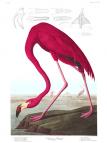 | Plate: 431 American Flamingo | ||
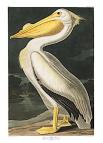 | Plate: 311 American White Pelican | ||
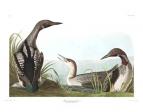 | Plate: 346 Black-throated Diver | ||
 | Plate: 307 Blue Crane or Heron | ||
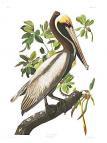 | Plate: 251 Brown Pelican | ||
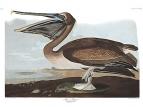 | Plate: 421 Brown Pelican | ||
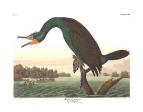 | Plate: 252 Florida Cormorant | ||
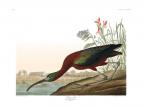 | Plate: 387 Glossy Ibis | ||
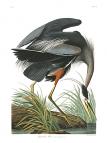 | Plate: 211 Great Blue Heron | ||
| |||

© Copyright 2007-2025 Zebra Publishing, LLC. | All Rights Reserved Terms of Use
Powered by Fusedog Media Group
